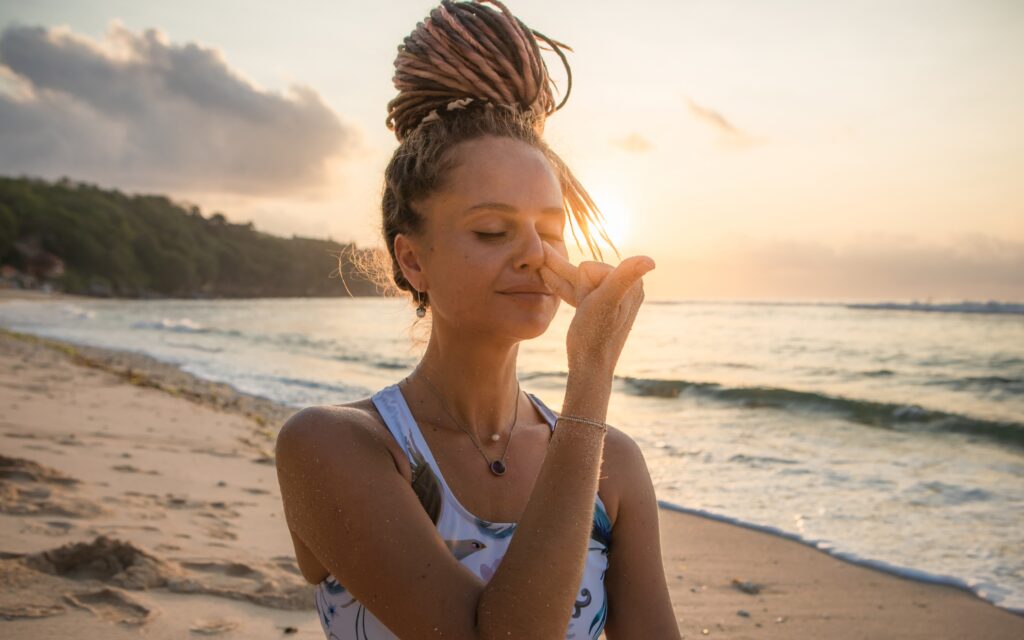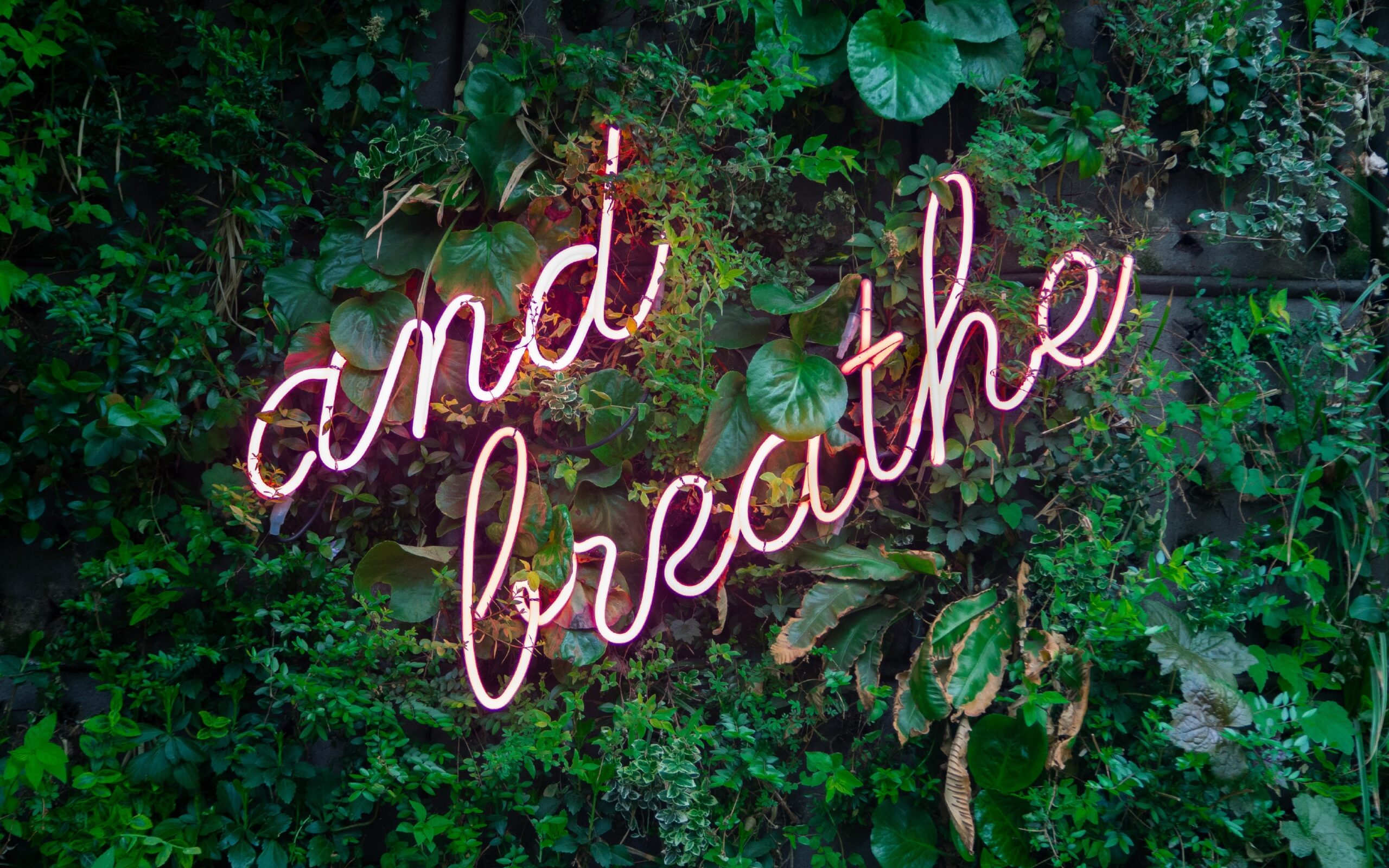Pranayama breathing: An introductory guide to the art of breathing
Are you familiar with the art of breathing?
Breathing is a natural practice – something that we do every day.
Most of the time, we barely notice our breath. It follows an organic pattern throughout the day as we work, relax, and even sleep. However, for those who follow Ayurveda practices, breathing represents an essential function of life.
Pranayama is a term that comes from the Sanskrit words for” life force” and ”extending”. Understanding the types of pranayama, and how they influence every cell in our body, gives us the power to adjust our mental health, combat stress, and tackle a range of other issues.
Today, we’ll be introducing you to the concept of total concentration breathing, and other types of pranayama that may help you to gain more control over your life.
Let’s practice the art of breathing.
What is pranayama and its benefits? Pranayama definition
Pranayama techniques are something you can practice at any time of the day, wherever you are.
However, because breathing is such a crucial part of Ayurveda yoga, pranayama breath is most often defined in connection to the” internal medicine” of the yogi. The idea is that structuring your breath carefully helps you to pull vital energy into the body in a variety of crucial ways.
Your pranayama also has a direct impact on the ”Doshas” of the body, such as Kapha, Pitta, and Vata – which are all kinds of life energy. Though the benefits of Pranayama depend on the person, some advantages are backed by extensive scientific research, such as:
- Reduced stress: One study found that pranayama could actively reduce stress in healthy adults, by calming nervous system. It can even help with minimizing anxiety before a test.
- Better sleep: Pranayama breathing can reduce the feelings of stress that may keep you awake. Specific pranayama techniques like Bhramari breathing slow the heart rate and get you ready for sleep. Studies have also found that it may be useful for reducing obstructive sleep apnea issues.
- Provides mindfulness: Most of us move through life paying very little attention to our breathing. However, when you learn how to practice pranayama, you’re aware of how each breath affects you. Higher levels of mindfulness help with emotional regulation. Pranayama can also assist in giving you the right level of oxygen to fuel healthy cognition.
- Strengthens cognitive performance: Studies have indicated that pranayama can help to boost executive function in the brain, which includes cognitive flexibility, working memory, and reasoning skills. Increased oxygen intake also assists with energy.
- Lowers blood pressure: Stress is a common cause of higher blood pressure. Pranayama techniques assist by supporting relaxation. One study found that participants with pranayama training achieved a better reduction in blood pressure than those using medication alone.
- Encourages lung health: Whenever you exercise any part of your body, you contribute to its strength. A study from 2019found that six weeks practicing pranayama improved lung function in participants, assisting with things like asthma, and allergic bronchitis.

How do you practice pranayama?
Practicing pranayama is simply the act of controlling your breath.
There are three components to each breath:
- Purak (inhale)
- Kumbhak (retain)
- Rechak (exhale)
There are various types of pranayama to explore, but it’s important to take your journey at your own pace. You be the judge of your own body. If you feel uncomfortable or lightheaded, return to normal breathing immediately. Additionally, be sure you’re never restricting or forcing your breath, as this can make you feel uncomfortable and unwell.
If you’re pregnant, suffer from various heart conditions, or have problems with your breathing already, consult a healthcare provider before practicing any pranayama techniques. If you’re safe to practice, remember that getting the perfect rhythm may take time. Be patient.
Common types of pranayama
As mentioned above, there are various types of pranayama.
Experts believe the best time to practice the art of breathing is first thing in the morning, when your stomach is empty. If possible, practice outdoors.
- Nadi Shodhana pranayama
Known to many as alternate nostril breathing, this is the art of balancing the energy in your body. Begin in a comfortable seated position and close your right nostril with your thumb. Breathe in deeply through the right left nostril and pause for a moment. Using your pinky and ring fingers of the same hand, close your left nostril and release the right. Breathe out through your right nostril.
As you breathe in, imagine your breath traveling through one side of your body, and out of the other. Switch back and forth between the nostrils you use for your Purak and Rechak.
Why? This kind of pranayama breathing is ideal for reducing anxiety, stress, or nerves. It can also help with encouraging sleep.
- Ujjayi Pranayama
One of the most popular choices for Pranayama yoga, this is a kind of “foundational” breath that mimics the motion of ocean waves.
To start, breathe in through your mouth, holding the back of your throat muscles tight. Close your mouth and breath through the nose without releasing the throat muscles. The idea is that you’ll be able to hear your breathing – a lot like listening to the ocean.
Why? Ujjayi breath helps to calm the mind, and it assists in opening your lungs properly when you need to prepare for something. It’s often called “victory breath”.
- Kapalabhati pranayama
Referred to most commonly as “fire breath”, the purpose behind this pranayama technique is to build a certain kind of energy within your body. Experts believe that this type of breathing helps to clear the air passages and reduce bloating. The process can also reduce congestion and boost lung capacity.
Start by sitting in a comfortable seat and exhale all the way outwards. Breathe in fast through both nostrils and breathe out again. You’ll feel as though you’re panting like a dog at first. Focus on the force of your exhalation. Remember, this pranayama is quite a complex one, so take your time.
Why: If you need help bringing more “fire” into your day, this is an excellent pranayama to try. Avoid using it if you have high blood pressure or heart issues.
- Bhramari pranayama
Commonly called humming breath, Bhramari pranayama is a type of breathing with a heavy focus on listening to the sound of your breath. Sit comfortably and close your eyes, using your thumbs to keep your ears closed, and your fingers to cover your eyes. Keep your mouth closed, and take a deep breathe in.
As you exhale, chant “om”, to create a humming sound that sends vibrations throughout your body. The natural vibrations can have a wonderfully calming effect.
Why: If you need an easy way to calm down or relax during a stressful time, Bhramari can help you to recenter yourself.
- Sheetali Pranayama
Sometimes called “Sitali”, this kind of breathing is intended to cool the mind and body. If you’re feeling overwhelmed in a hot climate, this breathing process will help. Roll to touch the outer edges and create a tube. If you’re unable to do this, you can press your mouth into an oval shape and keep your tongue flat instead.
Inhale through the mouth, collecting as much air as you can with a slight hissing sound. Touch the tip of your tongue to the roof of your mouth when you’re finished inhaling and feel how cool the air is there. Exhale through your nose when you’re ready.
Why: If you’re feeling irritable, overly hot, or you’re waiting impatiently in a place where you feel too warm, this is a great way to relax and cool off.
- Bhastrika pranayama
Better known to many as “bellows breath”, this type of Pranayama breathing is similar to the kapalabhati breathing process. However, there are some slight differences. With this kind of breathing, you inhale and exhale quite forcefully, while in a seated position.
Start by breathing in as hard as you can, using your diaphragm muscles, and then breathe out with the same level of force. Experts recommend doing ten cycles for a whole round of breathing. However, this can be a difficult practice for beginners.
Why: Often recommended to help people lose weight, this kind of breathing can give you an energy boost, particularly to your metabolism and digestive system. Try to avoid doing this too close to bedtime.
- Viloma pranayama
If you’re new to practicing the art of breathing, then you’ll love the Viloma pranayama technique. You can do this either sitting or lying down, so find a position that feels comfortable to you.
Fill your lungs to about a third of their capacity with your initial breath, then hold the air for a few seconds. Inhale for another third and hold your breath again. Finally, fill your lungs and hold onto the breath for as long as you can. Pause for a moment and repeat the 3-breath pattern for your exhale.
Why: Experts advise people to use Viloma when they’re struggling with a chaotic mind, or feelings of stress. It can be an excellent way to relax.
- Dirga Pranayama
The Dirga pranayama is called three-part breathing, as it involves drawing air into three separate parts of your abdomen. The attention you’re paying to the different parts of the body help to focus your mind.
Start sitting upright or laying on your back. Breath into your belly, watching it expand as you inhale. When you can’t breathe anymore, draw one more big breath into your rib cage to feel your chest expand. As you exhale, release the breath slowly, starting from your chest, all the way down your stomach.
Why: If you’re struggling with focus, the Dirga pranayama will assist you in bringing your mind and body back into the moment.
- Chandra pranayama
In Ayurvedic yoga and medicine, the left side of the body is most commonly linked to lunar energy and cooling. Chandra pranayama breathing takes advantage of this.
To begin, sit comfortably with your spine straight, but your shoulders relaxed. Use your right thumb to close your nostril on the right, and inhale through the left. Next, close your left nostril with your right index and middle fingers, and exhale from the right nostril.
You only inhale through the left nostril here.
Why: The Chandra pranayama is great for encouraging relaxation and cooling.
- Surya Bedha pranayama
Finally, right-side breathing is about stimulating the solar, or warm energy within your body.
Once again, start in a comfortable seated position, keeping your spine straight. Close your left nostril as you did above, and inhale through your right nostril. Close the right nostril when you’re ready to exhale and breathe out from the left nostril.
Why: If left-sided breathing helps to cool and relax the body, right-sided breath will assist with building energy and warmth.

Take a deep breath
Pranayama is often practiced as part of yoga, but it can be a valuable addition to any part of your life. Learning how to control your breathing strengthens the connection between your mind and body, promoting relaxation and emotional control.
Research even shows that the right kind of breathing can support various aspects of your physical health, from blood pressure and lung function to brain function.
Why not give it a try?





